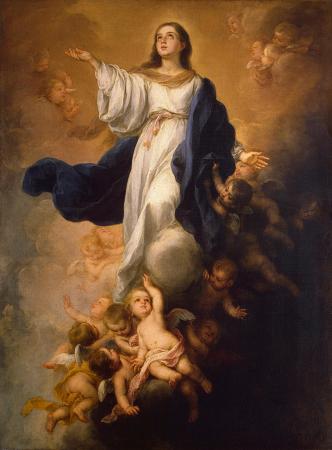Mary of Clopas. According to the Gospel of John, Mary of Clopas was one of the women present at the crucifixion of Jesus and bringing supplies for his funeral. The expression Mary of Clopas in the Greek text is ambiguous as to whether Mary was the daughter or wife of Clopas, but exegesis has commonly favoured the reading wife of Clopas. Hegesippus identified Clopas as a brother of Joseph. In the latest official edition of the Roman Martyrology of the Catholic Church she is commemorated with Salome on April 24th. Along with Mary Magdalene and Mary Salome, Mary of Clopas is known as one of the Three Marys at the tomb of Jesus. Her relics are said to be in France at the Church of the Saintes Maries de la Mer. Mary of Clopas is explicitly mentioned only in John 19:25, where she is among the women present at the crucifixion of Jesus. Now there stood by the cross of Jesus His mother and His mother's sister, Mary of Clopas, and Mary Magdalene. The Gospels of Mark and Matthew each include similar passages that are nearly identical to one another: Among which was Mary Magdalene, and Mary the mother of James and Joseph, and the mother of Zebedee's children. There were also women looking on afar off: among whom was Mary Magdalene, and Mary the mother of James the less and of Joses, and Salome. This has led scholars to identify Mary of Clopas with Mary the mother of James and Joseph/Joses. The Gospels of Matthew and Mark mention James and Joseph/Joses among the four brothers of Jesus. According to some interpretations, the same Mary was also among the women that on resurrection morning went to the tomb to anoint the body of Jesus with spices. Matthew calls her the other Mary to distinguish her from Mary Magdalene, while Mark uses the name Mary, the mother of James. In a manner very similar to the Gospel of John, the apocryphal Gospel of Philip also seems to list Mary of Clopas among Jesus' female entourage: There were three who always walked with the Lord: Mary, his mother, and her sister, and Magdalene, the one who was called his companion. His sister and his mother and his companion were each a Mary. Adding to the confusion, the Gospel of Philip seems to refer to her as Jesus' mother's sister and Jesus' own sister. The Gospel of Pseudo-Matthew presents Mary of Cleophas as the daughter of Cleophas and Anna: Jesus met them, with Mary His mother, along with her sister Mary of Cleophas, whom the Lord God had given to her father Cleophas and her mother Anna, because they had offered Mary the mother of Jesus to the Lord. And she was called by the same name, Mary, for the consolation of her parents. Mary of Clopas with children, by Adriaen van Overbeke The expression Mary of Clopas in the Greek text is ambiguous as to whether Mary was the daughter or wife of Clopas, but exegesis has commonly favoured the reading wife of Clopas.
more...



